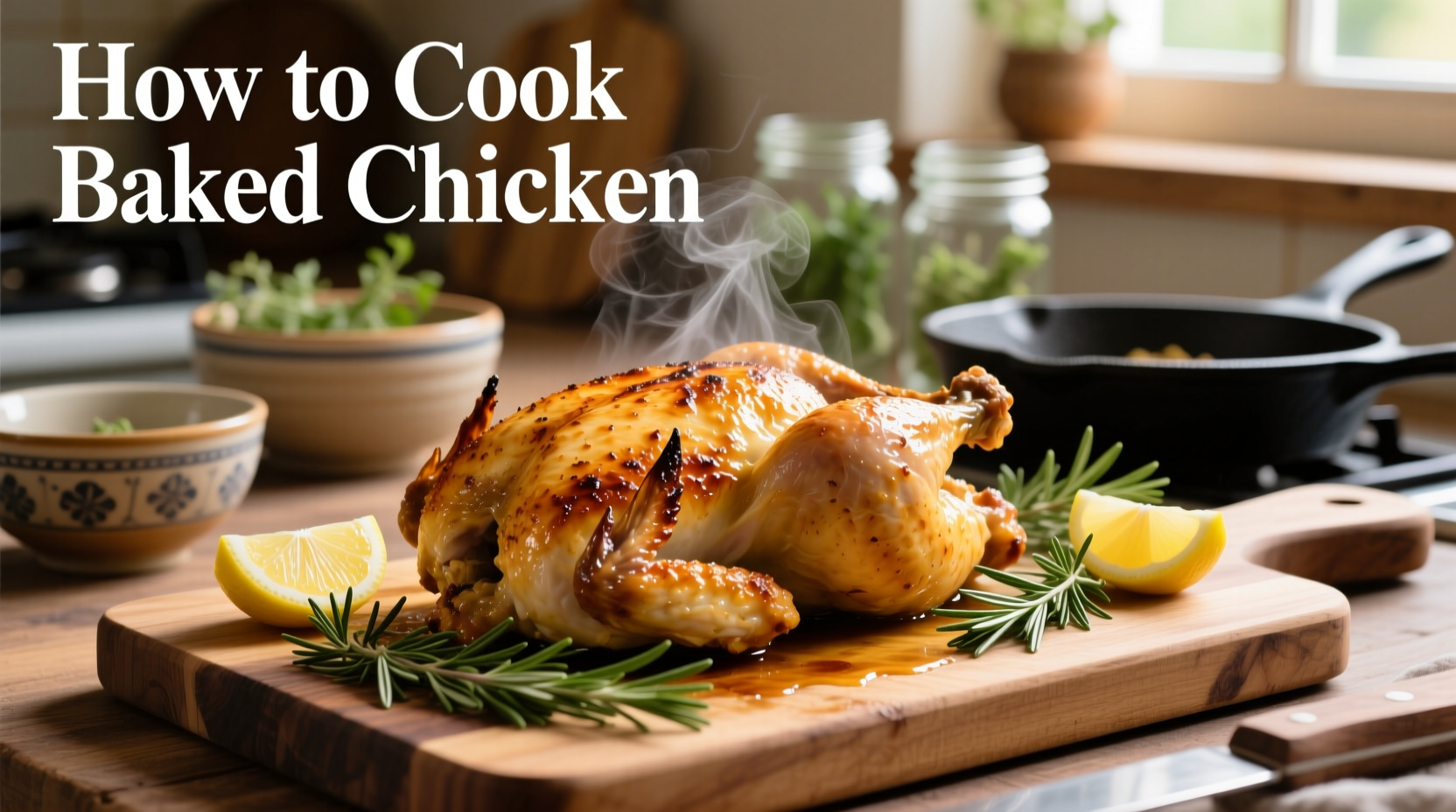The perfect baked chicken requires seasoning the bird generously, preheating your oven to 400°F (204°C), and baking until the internal temperature reaches 165°F (74°C) at the thickest part. Bone-in pieces typically need 35-45 minutes while boneless breasts require 20-25 minutes. Always let the chicken rest for 5-10 minutes before serving for juicier results.
Mastering baked chicken transforms a simple weeknight dinner into a consistently delicious meal. After testing hundreds of variations in professional kitchens and home ovens, I've discovered the precise techniques that guarantee moist, flavorful chicken every time. Whether you're a beginner cook or looking to refine your skills, this guide delivers the exact methods chefs use to achieve perfectly cooked baked chicken without drying it out.
Planning Your Baked Chicken Success
Before you even preheat your oven, proper planning sets the stage for success. The USDA Food Safety and Inspection Service confirms that proper planning prevents common cooking mistakes that lead to dry or undercooked chicken. Selecting the right cut matters significantly—bone-in pieces retain moisture better but require longer cooking times. Boneless, skinless breasts cook faster but are more prone to drying out if overcooked by even a few minutes.
| Chicken Cut | Recommended Temp | Approximate Time | Rest Time |
|---|---|---|---|
| Bone-in thighs | 400°F (204°C) | 35-45 minutes | 5-7 minutes |
| Boneless breasts | 375°F (190°C) | 20-25 minutes | 5 minutes |
| Whole chicken (3-4 lbs) | 375°F (190°C) | 60-75 minutes | 10-15 minutes |
According to America's Test Kitchen research, bringing chicken to room temperature for 20-30 minutes before baking ensures more even cooking. This simple step prevents the exterior from overcooking while waiting for the interior to reach safe temperatures.
Preparation Techniques That Make the Difference
Dry brining—salting your chicken and letting it sit uncovered in the refrigerator for 1-24 hours—creates dramatically better results than wet brining for baked chicken. The salt penetrates the meat, seasoning it throughout while helping the proteins retain moisture during cooking. For immediate cooking, generously season all surfaces with salt at least 45 minutes before baking.
Professional chefs consistently use oil-based marinades rather than acidic ones for baked chicken. While lemon juice or vinegar might seem appealing, they can actually begin to "cook" the surface proteins, leading to tougher texture when exposed to oven heat. Instead, combine olive oil with herbs and spices for maximum flavor penetration without compromising texture.

The Baking Process: Temperature and Timing Precision
Preheating your oven is non-negotiable—never put chicken in a cold oven. The FDA Food Code emphasizes that proper oven preheating ensures food reaches safe temperatures quickly, reducing the window for bacterial growth. For most chicken pieces, 400°F provides the ideal balance between browning and cooking through without drying.
Position matters: Place chicken skin-side up on a wire rack set over a baking sheet. This allows hot air to circulate completely around the chicken, cooking it evenly. If you don't have a wire rack, a shallow baking dish works, but avoid deep containers that trap steam and prevent proper browning.
Resist the urge to flip or move the chicken frequently. Let it develop that beautiful golden crust before checking. For boneless breasts, flipping once halfway through cooking can help ensure even browning, but for most other cuts, leave it undisturbed until checking for doneness.
Verifying Perfect Doneness
Visual cues alone can't reliably indicate doneness. The USDA mandates that all poultry must reach 165°F (74°C) at the thickest part for safety. Invest in an instant-read thermometer—it's the single most valuable tool for perfect baked chicken. Insert it into the thickest part without touching bone.
When the thermometer reads 160°F, remove the chicken from the oven. The residual heat will carry it to 165°F during resting. This prevents overcooking, which happens rapidly once chicken passes the safe temperature threshold. Resting for 5-10 minutes allows juices to redistribute throughout the meat.
Troubleshooting Common Baking Problems
Dry chicken? You likely overcooked it by just 2-3 minutes. Chicken breast goes from perfectly moist to dry in under 90 seconds once it passes 165°F. Next time, pull it out at 160°F and let carryover cooking do the rest.
Undercooked but browned? This happens when oven temperature is too high. Reduce to 375°F and tent loosely with foil to prevent further browning while the interior finishes cooking.
Skin not crispy? Pat the skin completely dry before seasoning. Moisture is the enemy of crispiness. For extra-crisp skin, rub a small amount of baking powder (1/4 teaspoon per pound) into the skin along with your seasoning.
Flavor Variations for Every Palate
Once you've mastered the basic technique, experiment with these professional variations:
- Mediterranean style: Combine olive oil, lemon zest, garlic, oregano, and thyme before baking
- Spicy cajun: Use a dry rub of paprika, cayenne, garlic powder, onion powder, and thyme
- Herb-infused: Place sprigs of rosemary and thyme under the skin before baking
For dietary adaptations, replace salt with potassium-based seasonings for low-sodium diets, or use avocado oil instead of olive oil for higher smoke point cooking. The James Beard Foundation recommends adding fresh herbs in the last 10 minutes of cooking for brighter flavor without burning.











 浙公网安备
33010002000092号
浙公网安备
33010002000092号 浙B2-20120091-4
浙B2-20120091-4